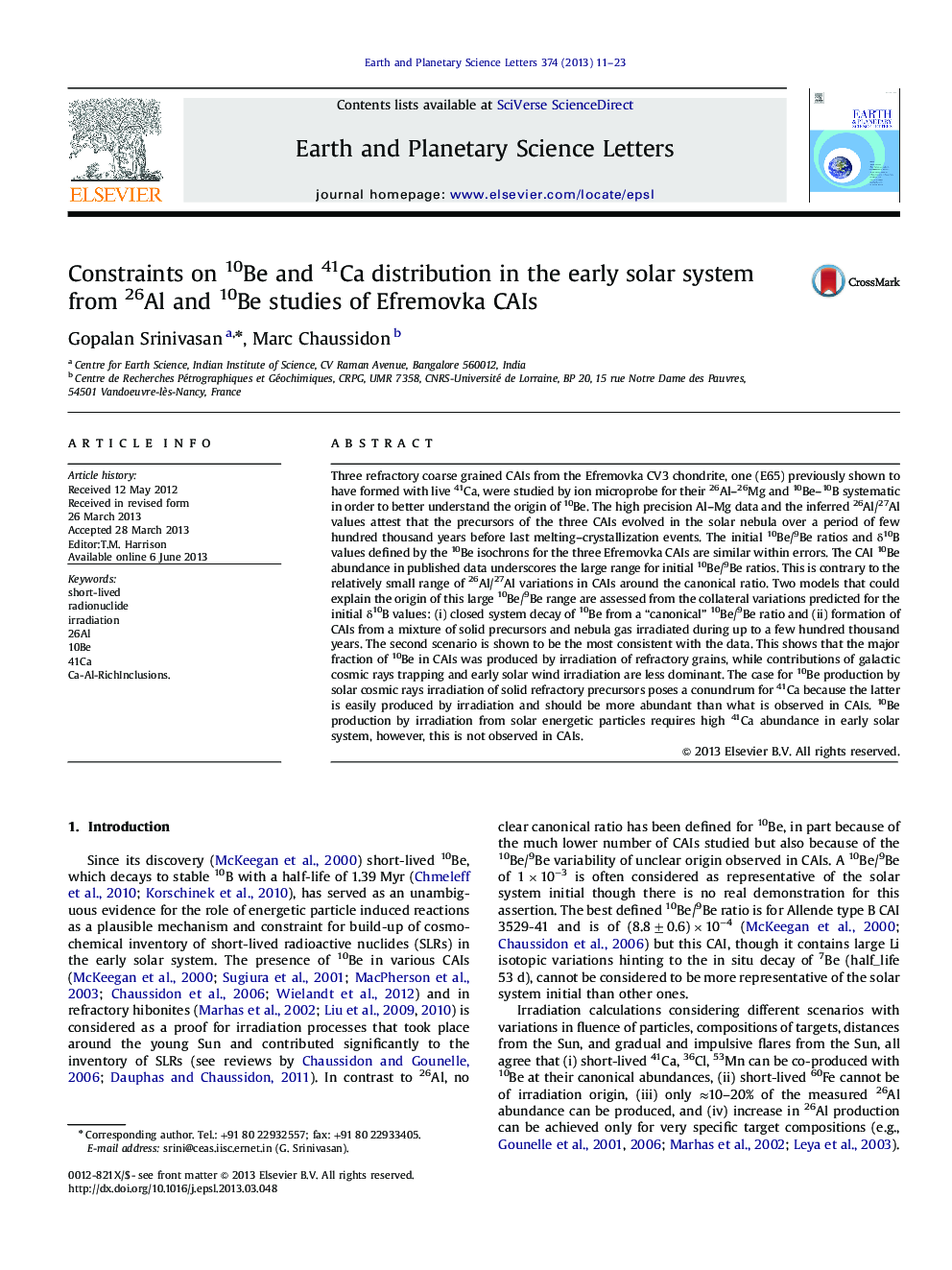| Article ID | Journal | Published Year | Pages | File Type |
|---|---|---|---|---|
| 6430126 | Earth and Planetary Science Letters | 2013 | 13 Pages |
â¢The Efremovka CAI precursors evolved in the nebula for ~3Ã105 yr before crystallization.â¢The initial 10Be/9Be and 10B/11B of CAIs is not due to closed system evolution of Be-B system.â¢10Be was produced through irradiation of CAI precursors during extended CAI processing.â¢10Be production should produce 41Ca in large abundance which is not observed.
Three refractory coarse grained CAIs from the Efremovka CV3 chondrite, one (E65) previously shown to have formed with live 41Ca, were studied by ion microprobe for their 26Al-26Mg and 10Be-10B systematic in order to better understand the origin of 10Be. The high precision Al-Mg data and the inferred 26Al/27Al values attest that the precursors of the three CAIs evolved in the solar nebula over a period of few hundred thousand years before last melting-crystallization events. The initial 10Be/9Be ratios and δ10B values defined by the 10Be isochrons for the three Efremovka CAIs are similar within errors. The CAI 10Be abundance in published data underscores the large range for initial 10Be/9Be ratios. This is contrary to the relatively small range of 26Al/27Al variations in CAIs around the canonical ratio. Two models that could explain the origin of this large 10Be/9Be range are assessed from the collateral variations predicted for the initial δ10B values: (i) closed system decay of 10Be from a “canonical” 10Be/9Be ratio and (ii) formation of CAIs from a mixture of solid precursors and nebula gas irradiated during up to a few hundred thousand years. The second scenario is shown to be the most consistent with the data. This shows that the major fraction of 10Be in CAIs was produced by irradiation of refractory grains, while contributions of galactic cosmic rays trapping and early solar wind irradiation are less dominant. The case for 10Be production by solar cosmic rays irradiation of solid refractory precursors poses a conundrum for 41Ca because the latter is easily produced by irradiation and should be more abundant than what is observed in CAIs. 10Be production by irradiation from solar energetic particles requires high 41Ca abundance in early solar system, however, this is not observed in CAIs.
Graphical abstractDownload high-res image (227KB)Download full-size image
